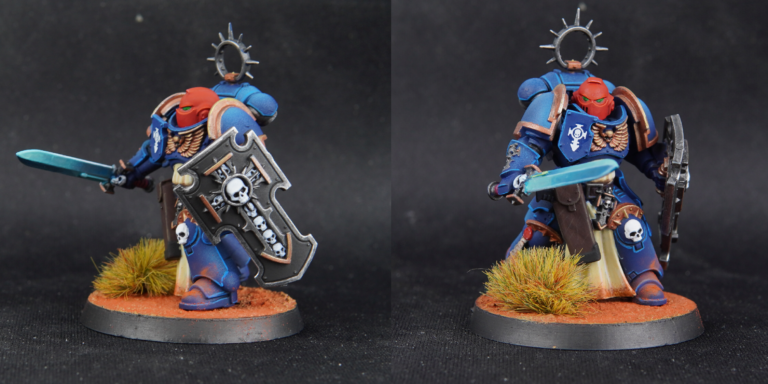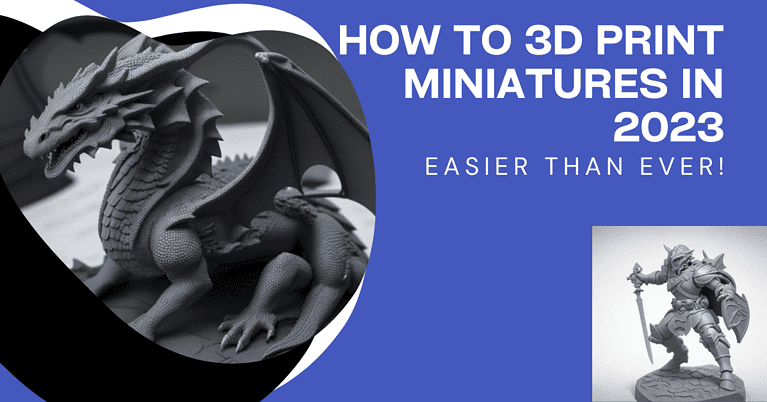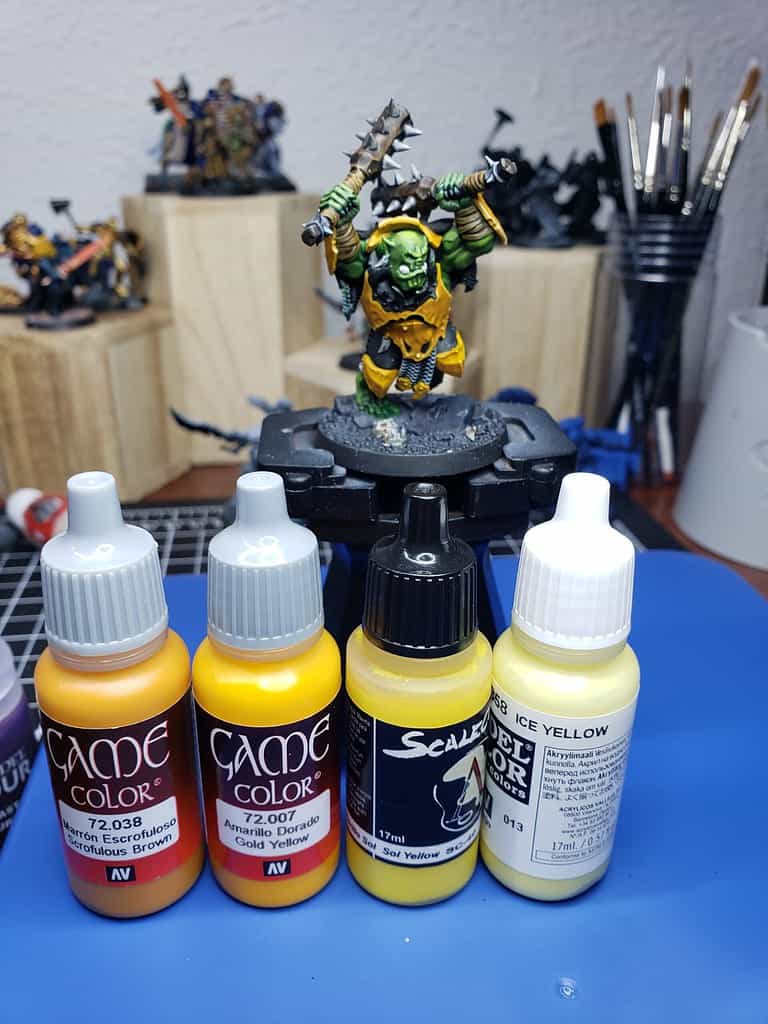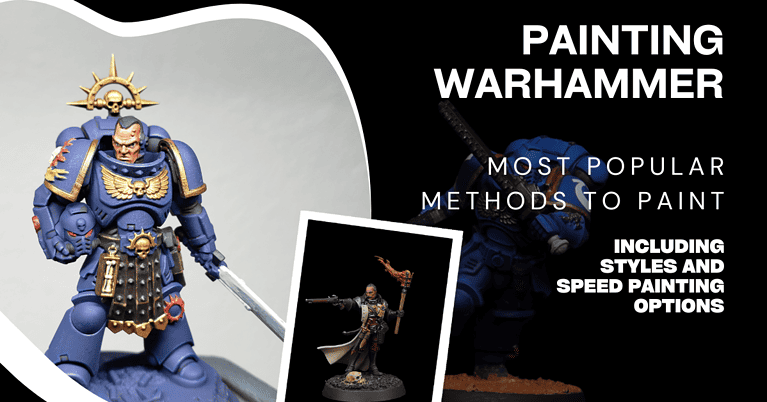Miniature Scale Explained: 1/12 scale, 28mm, Heroic and more
The goal here is to give you answers to any questions you have on Miniature scale. If you have trouble finding any answer or don’t see what you’re looking for, please let me know in the comments! I’m planning to keep this updated with any requests.
I will be focusing on 1/12 scale, 28mm scale and Heroic scale. This covers the ranges I am familiar with in miniature painting and modeling. Tabletop Wargaming is typically 28mm scale. Action figures are often 1/12 scale. Heroic scale is simply a style of modeling. More below.
As a general rule of thumb, most tabletop miniature sizes fall in between 25mm to 40mm scale. Meaning a 6 foot person would measure between 28mm and 40mm, roughly 1 inch to 1.5 inches. A 12 foot tree would be 2 to 3 inches tall. A 3 foot tall rock would be between 1/2 inch to 3/4 inch tall. And so on.
It is important to note a lot of miniature scale information is out of date or incorrect. The vast majority of miniatures are roughly 30-32mm scale. Miniature brands often do not include the scale of their models, because they vary a bit.
I’ll also go over 3D printing and how to get the miniatures to be in scale with other minis you have or plan to play with.
Miniature Scale Chart By Range
| Miniature Brand | Scale |
| Warhammer 40k / Games Workshop Miniatures | 30-32mm Heroic |
| Joytoy Warhammer Action Figures | 1/18 Scale (200mm) |
| Hero Forge 3D Printed | 30mm (adjustable) |
| Bandai Star Wars Action Figures | 1/12 scale (177mm) |
| Marvel Crisis Protocol | 40mm Heroic |
| Star Wars: Legion | 34mm |
| WizKids /Nolzur’s D&D Mini Scale | 25-30mm |
| Reaper (D&D, Fantasy, Sci Fi, etc) | 28-32mm |
| CMON (Marvel, Stranger Things, He-Man etc) | 30-32mm |
| Bolt Action WWII Miniatures | 28mm |
What are the Most Common Miniature Scales:
What is 1/12 Scale?
1/12 Scale or 1:12 is a ratio of 1 inch to 12 inches (1 foot). The Miniature would have one inch in height for every foot of the item it is modeling.
1/12 scale is on the larger side of miniatures. If you compare a 6 foot tall person at 1/12 scale it would be 6 inches high. At 28mm scale it would be closer to 1 inch high.
Some common examples of 1/12 scale miniature sizes include:
- A 6 foot tall person would be a 6 inch tall miniature in 1/12 scale – Many action figures are 1/12 scale models.
- A 2 story building that is 20 feet high would be 20 inches tall at 1/12 scale – Dollhouses are typically made in 1/12 scale size.
- A Car that is 14 feet long would be 14 inches long as a miniature in 1/12 scale – High end car models are often 1/12 scale.
What is 28mm Scale? Tabletop games, Games Workshop, D&D Miniatures.
The 28mm scale is meant to represent the height of a 6 foot tall person at scale. It is roughly equivalent to a 1/65 scale model. Many miniatures were this scale for a long time, including Reaper, Frostgrave, and Games Workshop miniatures from Warhammer 40k and their other properties.
Again I’ll probably mention this throughout the article, but the 28mm scale is less common now. Most miniatures are 30-32mm scale, larger than the 28mm you commonly see. Miniature scale has increased over time.
Games Workshop Miniature Scale
28mm scale is outdated for GW now, although they still produce older models in that size. Over time the 28mm scale has increased for many miniature makers. In 2023, Games Workshop’s Warhammer 40k, Age of Sigmar, Necromunda and other miniatures are roughly 30mm scale.
Warhammer Miniatures are also very often made to represent figures over 6 feet tall. The most popular Warhammer 40k models are the Primaris Space Marines. They are over 8 1/2 feet tall and the miniatures are in Heroic Scale, which makes them look even larger.
WizKids /Nolzur’s- D&D Miniature Scales
WizKids are the official maker of D&D minis. They also have Nolzur’s and other brands making miniatures for them. They tend to us 25mm scale for the majority of their models.
Generally speaking, minis between 25mm and 32mm scale will work well together on the table. They wont look drastically bigger or smaller.
Note that just because they are 25mm scale, doesnt mean they can’t be some really big miniatures. The Gargantuan White Dragon is 6 inches tall with a 9 inch wing span.
reaper miniatures – fantasy, scifi, steampunk and more
Reaper is a long time miniature maker. They have a very large collection of resin and plastic models. They are another company that has increased the miniature scales over time.
Miniature models and figures vary but they tend to make figures in the same genre the same scale. Meaning most of the fantasy and D&D type of models will be roughly the same.
There is no exact scale for these miniature figures, but as I mentioned they tend to be between 30-32mm. So you can mix and match Wizkids, Nolzurs and even Games Workshop miniatures.
Just remember that Games Workshop models are in heroic scale, so they have exaggerated hands and features. They’re also typically representing figures meant to be over 6 feet tall. So the exact scale isn’t really relevant.
What is Heroic Scale?
Heroic Scale refers to a style in which proportions and features are exaggerated on a miniature. It does not have to do with the overall size.
Heroic scale miniatures will have wider, thicker overall features, especially the head and hands.
This allows for a good aesthetic appearance, and allows heroic scale models to hold more details.
Games Workshop models have heroic scale proportions. Remember this doesnt mean they are a particular scale, it’s the style and look of the miniatures they make. The miniatures are easier to paint, look good, and read as “correct” even though they are not consistent with human proportions.
Can I Scale a 3D Printed Miniature?
Yes you can scale a 3D printed miniature up or down. To do this you need the file, a slicer program, a 3D printer and printing material like resin or FDM. In the slicer app you will have a “scale” option to configure how big or small you want your miniature.
7 Simple Steps to Correctly Scale Your Miniature With a 3D Printer:
- Determine the figure scale you are trying to achieve: for example a Warhammer Model is 32mm scale. To match that size you would want similar model scales.
- Determine how big your miniature should be in feet. For example a 12 foot giant, or a 4 foot dwarf.
- Take the number of feet you chose above, and divide that by 6. 6 feet is the reference scale. A 12 foot giant, divided by 6 = 2. A 4 foot Dwarf, divided by 6 = .67
- Download Sir Scalesby from Thingiverse. Choose the 32mm option, or whichever scale you chose in step 1.
- Load the correct size Sir Scalesby into your slicer.
- Load the source file of the miniature model you are looking to print.
- Use the “Scale” option on your slicer to resize your source file image to the appropriate height relative to Sir Scalesby. The 12 foot giant in our examples would be 2x the size. The 4 foot Dwarf would be .67x or 2/3rds the size.
Some Quick Definition on the items referenced above:
Slicers are programs that allow you to create and manipulate 3D printer files. They give you a file called an STL (Stereolithography). Some of the more common slicers include Lychee Slicer Pro, Chitubox, Prusa, Cura, slic3r and more.
Sir Scalesby is one of the STL files that you can load into your slicer. It allows you references for all the more popular scale model sizes you can choose from.
If you don’t know your reference scale, you can either measure a miniature you have access to or estimate. The relative scale would be the measurement in millimeters of a 6 foot tall person from eye level, to the bottom of their feet.
If for example you have something that is done in larger scales, you might measure it at 54mm or more. What you ideally want is anything meant to represent a 6 foot person, or something you can equate to 6 feet tall at eye level.
So if you have an 18 foot tall Dragon, you know that if you measure it that would be 3x the height of a 6 foot human. If that miniature measures roughly 96mm tall you know the scale is 32mm. The height of three 6 foot tall humans.
Here is a quick tutorial on 3D printing scaling with Sir Scalesby:
https://youtu.be/jW1mLG7wTq0
How can I check the size of a miniature?
If you have a miniature available as reference, you can simply measure it with a ruler. The reference is 6 feet. So if your miniature should be 6 feet, and it measures 32mm high, that’s your scale.
If it’s a smaller or larger figure than a 6 foot person, you’ll have to do a bit of math:
Reference height in feet divided by six, divided by actual height in millimeters
Example 1: object reference is 8 feet tall, divide by 6 = 1.33
1.33 times actual height of say 37mm = 27.8 or roughly 28mm scale.
Example 2: If the object is 3 feet tall, divide by 6 = .5
Actual height is 15mm divided by the .5 = 30mm scale
To make this easier I have two 3D printable solutions:
Printable ruler for scale: https://www.thingiverse.com/thing:3649454
This is simply a ruler with reference heights at 28mm and 34mm scale. You can place the miniature up to it and see at a glance how it would relate to different heights at scales.
A better solution is Sir Scalesby:
Sir Scalesby is a 6 foot reference that can be printed at many different modeling scales.
Gamers will often want to find miniatures of the same scale for the games they are playing. That can sometimes be difficult since there is a lack of information on many products. They all just tend to say “miniatures” or “figurines” or something equally vague.
If you are joining a D&D game and want to bring a miniature to represent your character, ideally it will be a similar scale as what others are using. You don’t want your 3 foot halfling to be the same size as a 7 foot Goliath.
As I said in the beginning of the article, there is not a lot of information on scale from major miniature companies. What little information there is is often outdated.
Right now as I write this in 2023, the majority of tabletop games use miniatures around 30-32mm in scale or even slightly larger. They hold more detail, look better and are easier to paint.
What Historical Wargaming Scale Models Are Available?
Historical Wargaming Models date back
6mm model scale: Baccus is one of the big one I’m aware of for 6mm miniature models. They are teeny tiny but often grouped up in units. There is also Microworld which has some really cool stuff, they even have 3mm miniatures!
15mm and 20mm model scale: Plastic Soldier Company has a lot of options at the 15mm and 20mm scale. Microworld has 15mm as well.
25mm miniature scales: Again Plastic Soldier Company
28mm miniature scales: Bolt Action from Warlord games has a very large selection in this range of WWII, ancients, Romans and more miniature models in 28mm.
Larger Scales and Busts: 54mm – 200mm Modeling Scale
When it comes to larger modeling scales, you don’t have quite as many options but they are still plentiful. A larger scale model is typically assembled and painted for display. As opposed to the smaller modeling scale miniatures that are made for tabletop gaming.
I’ll give you some examples of scales and sizes along with models in those sizes.
54mm 1/32 Scale Models and Miniatures
Brands like Reaper and Kimera have options in this size. This represents roughly double the size of a 28mm miniature. They are large but not overwhelming.
The added size gives a lot of room for detail and artistic expression.
Examples:
Reaper 54mm Figures.
Noble Knight Games 54mm Figures.
Kimera Furor Model: Vimir
Pegaso/Kimera 54mm: Marshal Pierre Francois Augereau
75mm 1/24 Scale Models and Miniatures
Kimera Models at Pegasoworld.com have a good selection of larger scales. One of the most popular is the 75mm model scales. These are quite large in comparison to tabletop minis.
Painting something in this scale is something you’d need to get used to if you’re coming from tabletop, but the principles remain the same.
Examples:
Reaper 75mm: Scarlet, Cyberist
Kimera/Pegaso 75mm: Roman Gladiator
200mm Scale Models:
At 200mm you’re into the action figure size model. A 6 foot figure scale sits roughly 8 inches tall, with a lot of detail.
At this level of scale you are working with surfaces that might require you to change your techniques a bit. You might want to work with an airbrush to get base coats down quickly and smoothly, or you might want oils and acrylics to get the most out of your model.
Example:
Kimera/Pegaso Ghengis Khan is 200mm scale
200mm 1/9 Scale Busts
Miniature Busts are simply scale model representations of figures that include the upper portions of the body. The head and neck are displayed and often it will extend to shoulders and chest. Sometimes they will also include the waist.
Busts are often made to be painted and displayed.
Examples:
Kimera Models “The Jewels” bust bundle has 3 200mm scale busts
The Elf Huntress Bust is also 200mm





